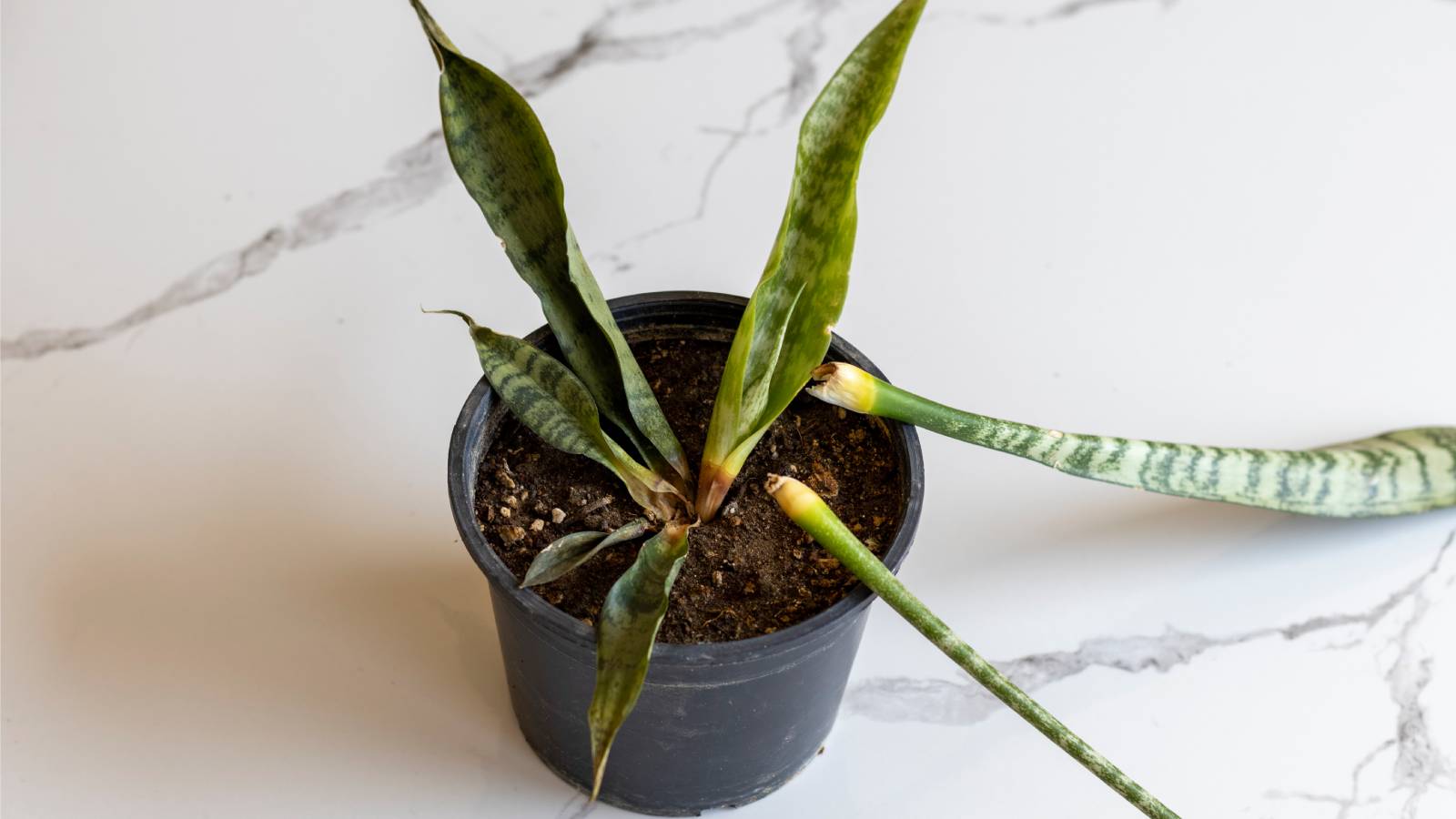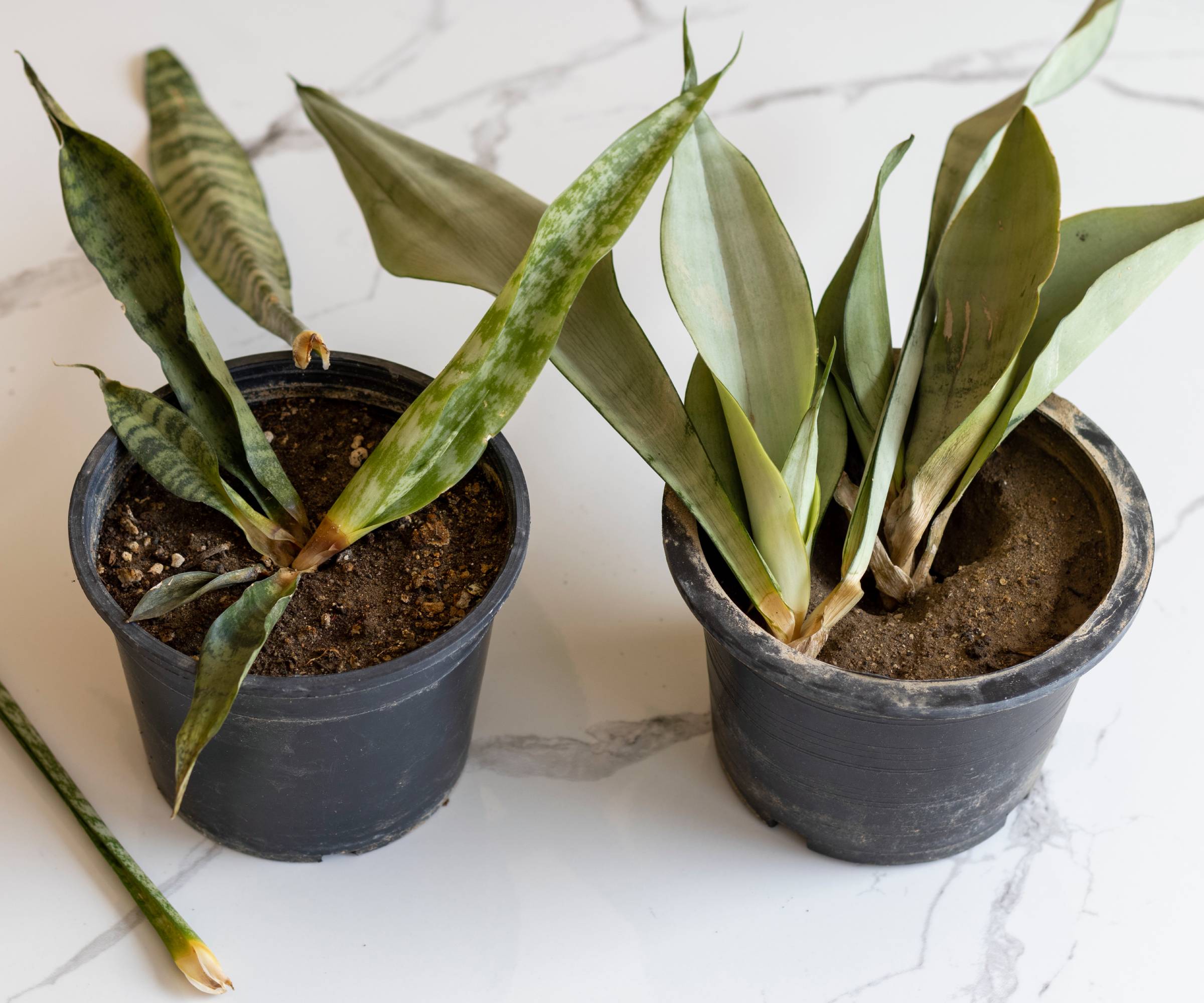Telltale Signs Of An Overwatered Snake Plant – And How To Fix This Fatal Mistake
You’ll know if you have an overwatered snake plant. It will tell you in several ways. Learn how to save it if you have an accidental overwatering incident.


There are some very telling signs you have an overwatered snake plant. The trick is to catch the issue early, well before root rot sets in and kills the whole plant. Snake plants are one of the most popular houseplants and are valued for their dramatic beauty. A snake plant overwatered will express its displeasure first in its leaves. Overwatering a succulent, which includes the snake plant in its class, is one of the most common reasons for plant decline. Other factors that contribute to overwatering are heavy soil, lack of drainage holes, and the time of year.
Signs of an Overwatered Snake Plant
Think you may be guilty of overwatering your snake plant’s soil? These are succulent plants even though they don’t have spines or the characteristic plump pads and leaves of a typical succulent. But as succulents, they can conserve moisture and don’t respond well in soggy soil. Overly wet soil reduces oxygen movement, enhances certain diseases, and reduces the root’s ability to uptake both moisture and nutrients.
In an overwatered snake plant, the first signs are seen in the leaves. Visibly, the foliage will begin to turn yellow or brown. Notice if your snake plant leaves are droopy or feel soft and squishy. Properly watered leaves are firm and almost rigid. Black spots will occur on the leaves and the foliage will begin to sag. The soil could develop a white fungal covering, soil gnats may be present, and the roots could begin to rot in severe cases.

How to Fix an Overwatered Snake Plant
If you’ve caught it early, simply stop watering it until the soil is dry all the way down to the drainage holes. Remove any heavily damaged leaves.
If the leaves are turning squishy, remove the entire plant from its container and examine the roots. Root rot is the most common killer of these houseplants. If the roots are dark, brown and black, smelly and soft, things may have progressed too far. However, in an attempt to save the plant, get sharp, sterile scissors or pruners and remove any diseased roots. If you are left with at least half undamaged roots the plant could survive.
Sanitize the container with a bleach and water solution and allow it to air dry. Do not reuse the old soil which is harboring harmful fungal pathogens. Use a good succulent or cactus mixture that percolates easily and replant the snake plant at the same level it was before. If you wish, you can dust the roots with antifungal powder or dip them into a very light solution of 1 part bleach to 6 parts water.
When and How Much Water for Snake Plant

To prevent snake plant overwatering, a few tips could help. There is no specific rule as to when or how much water to give the plant. The amount and frequency depend on where the plant is located, what type of soil it is in, how large the container is, and what it is made from, as well as other factors:
Sign up for the Gardening Know How newsletter today and receive a free copy of our e-book "How to Grow Delicious Tomatoes".
- If the plant is near a heating vent it will dry much more quickly than one that is not.
- If the soil is standard potting soil it will retain water due to the presence of peat in the mixture.
- A very large container will harbor more moisture, while a plant that is pot-bound will not retain much water.
- A plant that is moved outside for the summer and is exposed to drying winds and overhead sun will dry out more quickly than one indoors.
- If the container is unglazed it will dry more readily than a glazed pot.
- The number of drainage holes will affect percolation.
So there isn’t a pat answer for watering times and amounts. You can gauge soil moisture in plants with a soil moisture meter or your hands. Water only when the soil is completely dry all the way to the bottom.
In the winter, the plant is in dormancy and not actively growing. During fall and winter, only water once per month on average. It is better to underwater these beautiful foliage plants than to overwater them. They are drought-tolerant and will survive until the next irrigation cycle.

Bonnie Grant is a professional landscaper with a Certification in Urban Gardening. She has been gardening and writing for 15 years. A former professional chef, she has a passion for edible landscaping.